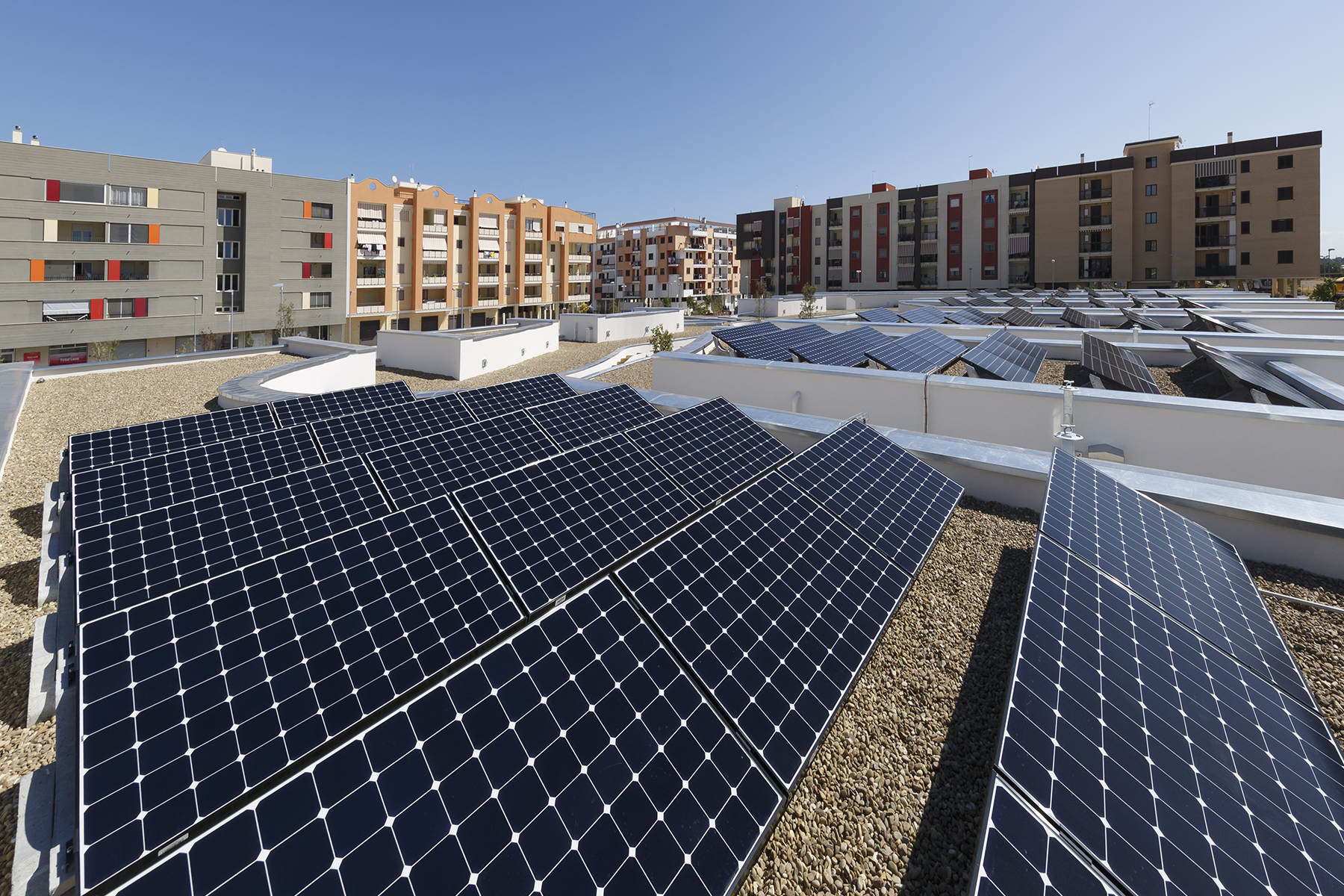(Estimated reading time: 4.52 minutes) – Audio version of article available.
Around 3,000 hours of sunshine per year is energy potential that should be used. Solar power is one of the aces up Spain’s sleeve to reduce foreign energy dependency (around 74% (INE (National Statistics Institute), 2019)), to stop using fossil fuels that must be imported and that release greenhouse gas emissions that cause climate change, and to care for its biodiversity and air quality.
Along with ground plants, self-supply “allows any individual or company to produce and consume their own electricity by installing solar panels or other renewable-generation systems in their home, place of business, or neighbourhood (IDAE (Institute for Energy Diversification and Savings), 2020). This is another tool available to industries, businesses, individuals, and collectives like neighbourhoods, to make the most of the great solar capital afforded our country by its privileged geographical location.
Since Royal Decree-Law 15/2018 was approved (BOE (Official State Gazette), October 2018), on urgent measures for energy transition and consumer protection, which eliminated the so-called “sun tax” (tolls on self-supplied power), the government, regulation after regulation, has been unblocking expansion of self-supply, approved in the applauded Royal Decree 244/2019 (BOE (Official State Gazette), April 2019), and eliminating administrative hurdles that drew out the installation process.
The aforementioned Royal Decree-Law 15/2018 established different self-supply modes: without excess and with excess, which could either be compensated or not. In the former, there is only one player: the consumer. Meanwhile, in the latter, there are two: the consumer and the producer. The former has anti-spillover systems to prevent energy that is produced but not consumed from being injected into the network and stored in batteries. For installations with excess energy, meaning where leftover energy is injected into the network, that are under compensation models, the value of this excess energy is offset on the bill at the end of the period, after registration.
Self-supply installations are individual when there is one sole consumer associated with them. They are collective when there are several consumers. This was one of this Royal Decree’s great milestones, acknowledging collective self-supply, which opened the door to installations in neighbourhood associations and industrial parks. These may be installations close to the point of consumption connected to the consumers’ interior network, or installations close to the point of consumption through the network. This latter case refers to connection to low-voltage networks that depend on the same electric transformer or less than 500 metres from the consumer or networks located in the same cadastral reference as the consumer.
In the year 2020, 596 megawatts of solar self-supply were installed in our country, a 30% increase in comparison with 2019. Specifically, 56% of these 596 MW are in the industrial sector, 23% in the commercial sector, and 19% in the domestic sector (UNEF (Spanish Photovoltaic Union), January 2021).
In terms of profitability, the Asociación de Agencias Españolas de Gestión de la Energía (Association of Spanish Energy Management Agencies) offers model cases on its webpage for technical-economic study, organised by user type. There is also a calculator to discover, besides the power that needs to be installed in each case and the rooftop surface needed, possible energy and economic savings (Eneragen). In any event, there are flexible financing options offered by different retailers, which need not be the same as the installer companies, although they may be. The installer company must take care of registration and processing.
In addition to the financing solutions offered by many retailers (for example, loans with savings management packages), many town halls provide reductions on council taxes and other taxes to those who self-supply in the home, in addition to the subsidies that each Autonomous Community has approved to encourage self-supply.
In the Professional Guide for Processing Self-Supply Installations (IDAE (Institute for Energy Diversification and Savings), 2020), you can view very useful information on the processes that must be carried out when starting up an installation, both with Autonomous Communities and with distributors.
Solar self-supply is a mainstay to reduce greenhouse gas emissions and to meet our climate goals of keeping the planet’s average temperature increase below 1.5ºC.




